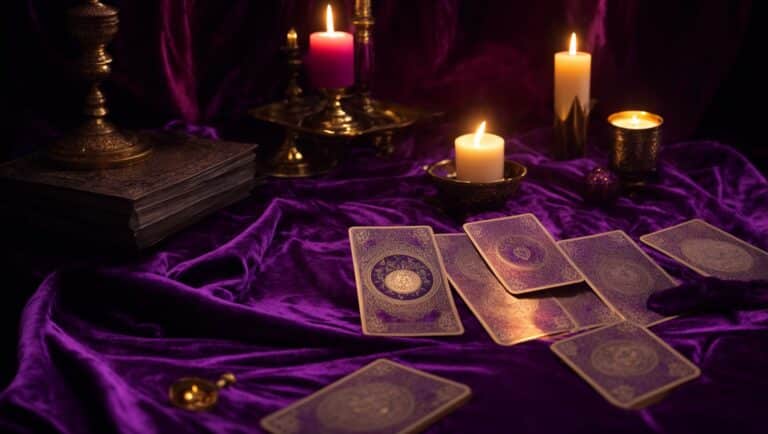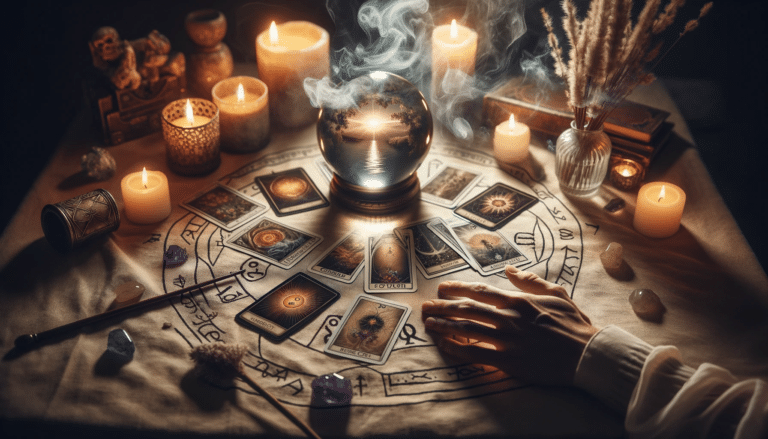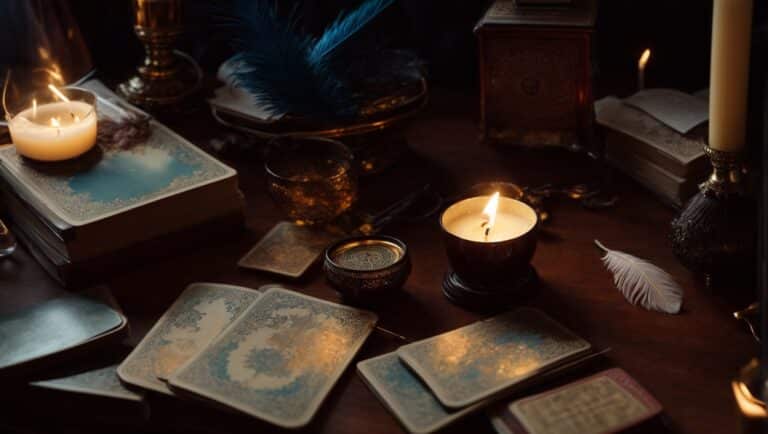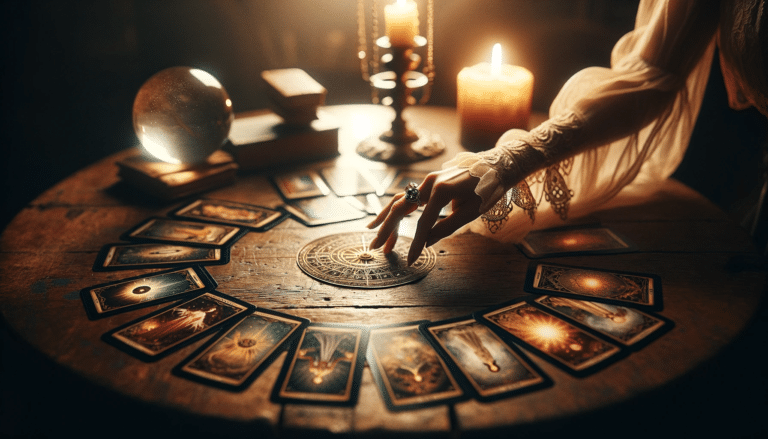Interpretation of Tarot Card Reversals: 5 Essential Tips
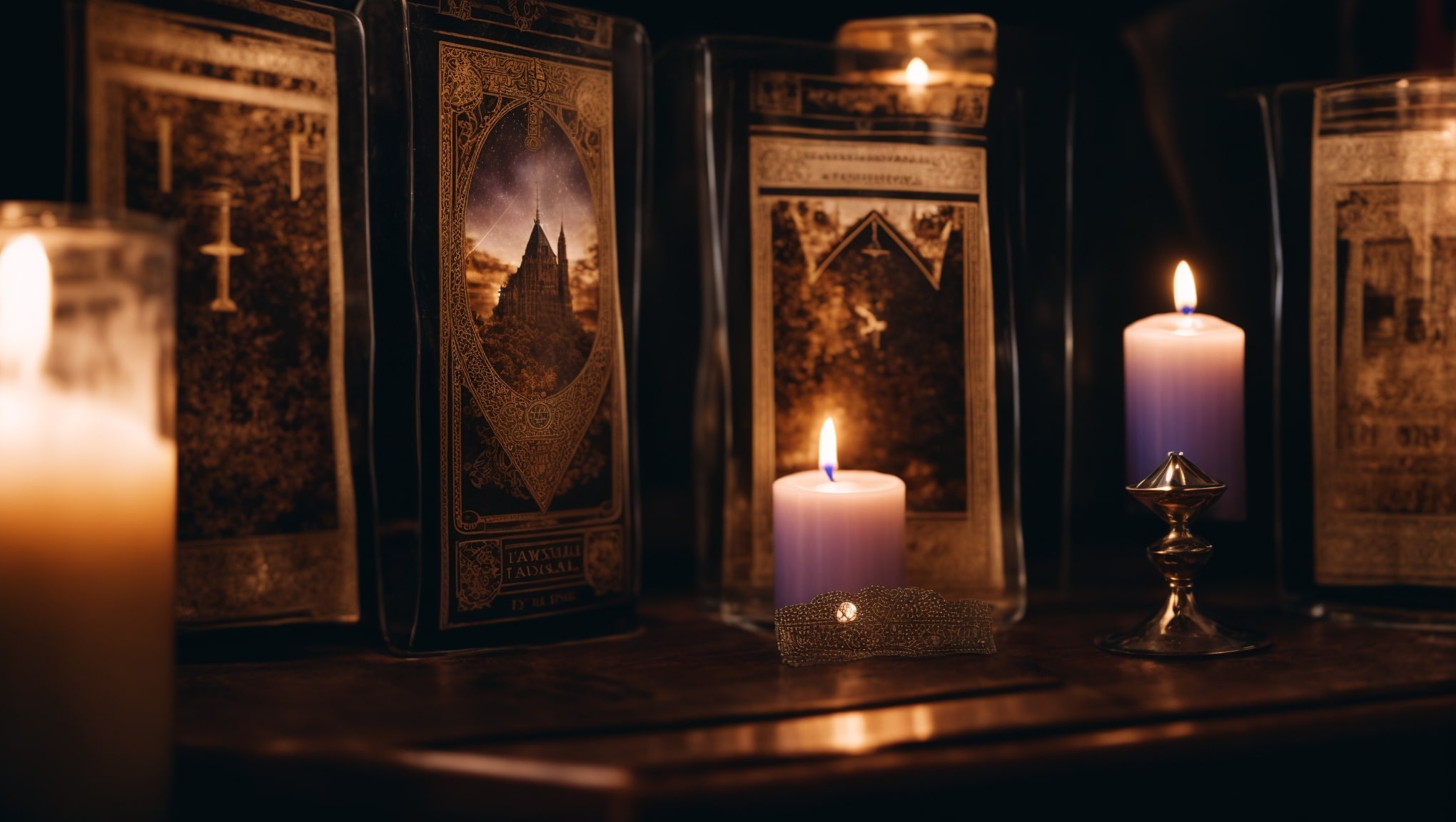
Navigating the world of Tarot can feel like wandering through a dense, mysterious forest. You’re unsure of the path and every turn seems shrouded in uncertainty. But have no fear!
I’m here to help you decode the enigmatic language and interpretation of Tarot card reversals.
With these five tips, you’ll be interpreting reversed cards like a pro, shedding light on the shadows and unveiling the secrets hidden within your readings.
Let’s embark on this enlightening journey together.
Key Takeaways
- Reversed cards indicate blocked or resisted energy of the card’s upright meaning.
- Context is important when interpreting reversals, such as obstacles or challenges.
- Surrounding cards can provide clues to the meaning of a reversed card.
- Trusting your intuition is crucial in tarot reading.
Understanding Tarot Card Reversals
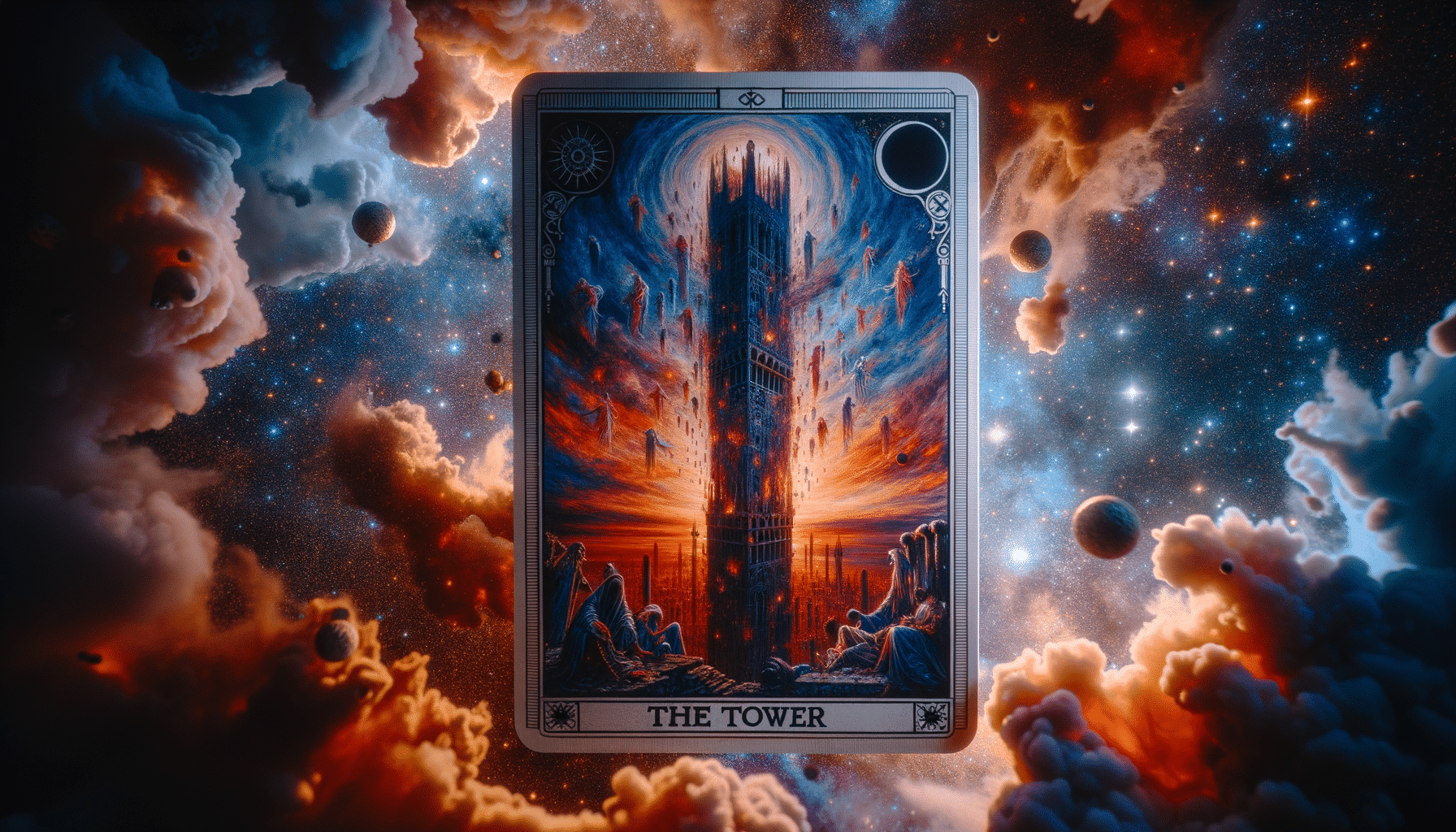
When you’re delving into the world of tarot, understanding card reversals can really enhance your readings. It’s not just about flipping a card upside down; there’s a deeper significance. Essentially, a reversed card indicates a blocked or resisted energy of the card’s upright meaning.
Don’t fret if you’re just starting out. It’s common to feel a tad overwhelmed but, with practice, you’ll get the hang of it. Remember, tarot is a personal journey. It’s not about memorizing meanings but interpreting them in a way that resonates with you.
Consider the context of the reversal. If it’s in a position relating to obstacles or challenges, the reversal could signify an internal struggle. A reversed card in a future position might indicate potential resistance to change.
Also, it’s crucial to look at surrounding cards. They can often give clues to the meaning of a reversed card. If there are many reversed cards in a reading, it could suggest that you’re in a period of uncertainty or transition.
Lastly, trust your intuition. It’s your most powerful tool in tarot reading. You’re the interpreter and the cards are your guide. Your interpretation is what’s most important.
Check out our Tarot Cards & Oracle Decks here…
The Importance of Context in the Interpretation of Tarot Card Reversals

You can’t underestimate the importance of context in tarot card readings. The impact of surrounding cards can drastically alter a card’s meaning.
Context in Card Reading
Consider the context of the tarot spread; it’s crucial for interpreting reversed cards accurately. The surrounding cards, your intuition, and the querent’s situation all play a significant role in understanding the reversed cards. Don’t view these cards in isolation, but see them as part of a bigger picture.
Here are a few tips to help you master this:
-
Look at the cards surrounding the reversed card. What’s their message? How do they interact with the reversed card?
-
Tune into your intuition. What feelings or thoughts does the reversed card evoke in you?
-
Consider the querent’s current situation. Does the reversed card reflect their experiences or challenges?
-
Finally, don’t rush your interpretation. Take your time to understand the context; it’ll make your readings more accurate and helpful.
Surrounding Cards’ Impact
In delving deeper into the importance of context, the influence of surrounding cards in a tarot spread can’t be underestimated. You see, each card doesn’t exist in isolation. Like words in a sentence, they gain meaning from those around them.
A reversed card might seem ominous, but if it’s flanked by positive cards, it could indicate overcoming obstacles. Likewise, a typically beneficial card could warn of complacency if negative cards surround it.
Understanding this context is key to interpreting tarot card reversals accurately. It’s about seeing the whole picture, not just individual pieces. So, when you’re reading tarot, don’t rush to interpret cards independently. Take a moment to consider their position and the influence of neighboring cards. You’ll find your readings become much richer and more insightful.
Contextual Interpretation Variations
Understanding the context of tarot card reversals is vital, as it can drastically change the interpretation of each card’s meaning. Context is the background that sheds light on the nuanced meanings of reversed cards.
Here are some key tips to keep in mind:
- Always consider the question or situation at hand. The same card can mean different things in different contexts.
- Pay attention to the position of the card in the spread. This can influence how its reversal is interpreted.
- Look at the surrounding cards. They can provide important clues about the context.
- Remember that tarot is a dynamic system. The meanings of reversed cards aren’t fixed, but shift with the context.
Grasping these variations in interpretation will pave the way to the next important aspect: the role of intuition in interpretation.
Learn about more Tarot Basics here…
Role of Intuition in Interpretation

When interpreting tarot card reversals, your intuition plays a crucial role. It’s often about developing psychic abilities and trusting your gut.
But remember, it’s also a balance between intuition and knowledge.
Developing Psychic Abilities
While you’re strengthening your psychic abilities, it’s crucial to trust your intuition as it plays a significant role in interpreting tarot card reversals. You’re not just reading symbols on a card; you’re tapping into your subconscious, picking up subtle energies and impressions. It’s like learning a new language, one that speaks directly to your soul.
Here are some ways to develop your intuitive skills:
- Practice meditation regularly. This will help clear your mind and open your third eye.
- Keep a dream journal. Often, your subconscious communicates through dreams.
- Use crystals or other tools that resonate with your psychic energy.
- Spend time in nature. Nature has a way of grounding us and enhancing our intuition.
Trusting Your Gut
So, you’ve been honing your intuitive skills, now it’s time to make sense of the whispers from your gut in tarot card interpretations.
Tarot reversals aren’t just about literal upside-down cards. They’re about tapping into your gut feeling – your intuition – and trusting what it tells you.
Remember, there’s no right or wrong when interpreting reversed cards. It’s all about how the card makes you feel. Does it make you uneasy? Does it spark joy? Your gut reactions are valid interpretations. Don’t dismiss them.
Instead, have faith in your intuition and allow it to guide your interpretations. The tarot is a tool for self-discovery and your gut instinct is a vital part of that journey. Trust it.
Intuition Versus Knowledge
Although you’ve been guided to trust your intuition, it’s crucial to be aware of the interplay between your instinctive responses and the knowledge you’ve acquired about tarot cards in your interpretations. Both intuition and knowledge can play an essential role in understanding tarot card reversals. Balancing these two can be tricky but crucial for accurate readings.
Here are some tips to help you:
- Trust your gut: Your first reaction to a card can hold the key to its meaning.
- Remember the basics: Don’t ignore the traditional interpretations of the cards.
- Practice makes perfect: The more you practice, the better you become at combining intuition and knowledge.
- Stay open-minded: There isn’t always a right or wrong interpretation. Your intuition could lead you to unique insights.
Learn even more secrets of Interpreting Tarot Cards here…
Common Misconceptions About Reversals
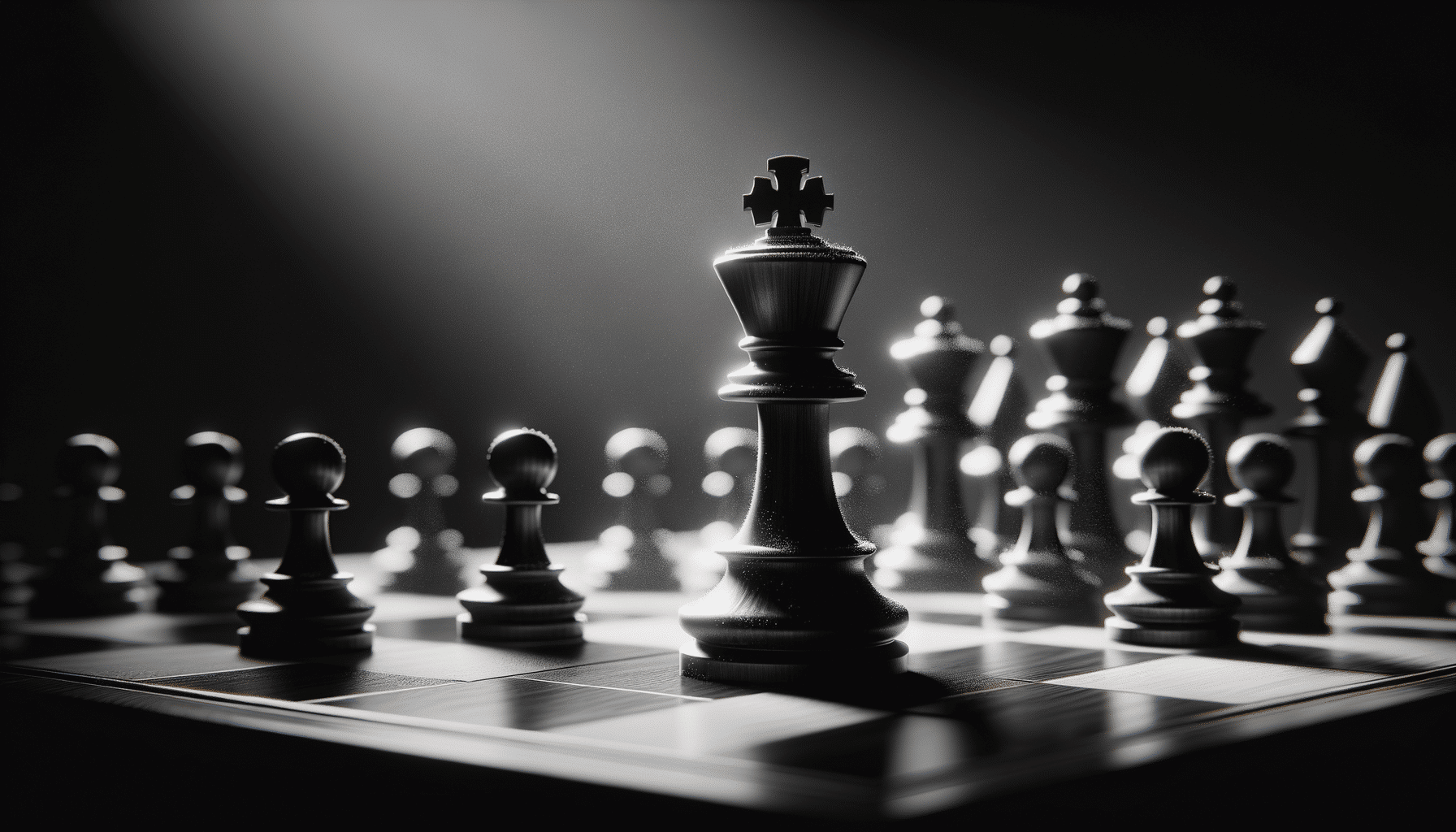
You might harbor some misunderstandings about tarot card reversals, a common obstacle in the journey of mastering tarot readings.
The first misconception you might hold is that reversed cards always indicate something negative. This isn’t always the case. Reversed cards can simply mean a delay, internalization, or a different perspective rather than a negative outcome.
Secondly, you might believe that reversed cards are unnecessary and complicate the reading. Contrary to this belief, reversals increase the depth of a reading, providing additional layers of meaning. They help you delve deeper into the situation at hand.
Lastly, some people think that you should ignore reversed cards during a reading. This couldn’t be further from the truth. Ignoring reversed cards is like neglecting half of the story. They’re integral to tarot readings and ignoring them could lead to incomplete insights.
Personally, I don’t read reversals (at least not in the typical way most tarot readers do)…
For instance, I don’t keep reversed cards in my decks. And I don’t intentionally reverse any of the cards when I’m shuffling, setting my intentions, or preparing for a reading. However, I also don’t manually select cards for my tarot spreads… I shuffle and whatever cards are supposed to come out, just shoot right out of the deck.
And most times, when a card lands on the table in reverse, I simply flip it right-side-up without even realizing I’m doing it. But sometimes, I get a super strong “nudge” that it’s supposed to be reversed in this case (and sometimes it feels like I get screamed at), and in those cases, I definitely take the reversal and read it that way.
In the end, it’s crucial to understand that these misconceptions about tarot card reversals can hinder your progress as a tarot reader. By dispelling these myths, you’re one step closer to mastering your readings. Stay tuned to learn about the practical application of reversals in the next section.
Practical Application of Reversals

Now that we’ve debunked a few myths about tarot card reversals, let’s dive into five practical ways you can apply these reversals to enhance your readings. These methods will help you gain greater insight from your tarot spreads and foster a deeper understanding of the cards’ messages.
Here are four key techniques to get you started:
-
Consider the Opposite: When a card appears upside down, it can signify the opposite of its upright meaning. For example, The Sun reversed might indicate a lack of clarity or positivity.
-
Look for Blocked Energy: Reversed cards can suggest blocked or resisted energies. If The Lovers show up reversed, it could be pointing to a struggle with a relationship or decision.
-
Identify Internal Processes: Sometimes, reversals indicate an internal process rather than an external one. A reversed Hermit, for instance, might mean you’re engaging in deep introspection.
-
Notice Delayed Manifestations: Lastly, a reversed card could mean a delay in the manifestation of its upright meaning. The Wheel of Fortune reversed might hint at a delay in a cycle of change.
These tips won’t just make your readings more nuanced, they’ll also deepen your connection to your tarot deck. Remember, practice makes perfect. Keep exploring and trusting your intuition.
Enhancing Reading Skills With Reversals

Mastering interpretation of tarot card reversals can significantly enhance your reading skills, offering deeper insights and more nuanced interpretations. You’re not just looking at the card’s literal opposite meaning when it’s reversed, you’re also considering a spectrum of possibilities. This opens up a richer tapestry of symbolism and messages for you to decipher.
Don’t be daunted by the complexity of reversals. Embrace them. They’re not meant to confuse you, but to provide you with a wider array of interpretations. Remember, the reversed position doesn’t always signify something negative or bad. It can often indicate a delay, a need to introspect, or a situation that requires a different approach.
Engage with your intuition and allow it to guide you. The more you practice reading reversed cards, the more comfortable you’ll become. Use your knowledge of the upright meanings as a foundation, then explore the layers that the reversed position adds. Be patient with yourself. Tarot reading is a journey of discovery and personal growth.
Frequently Asked Questions

What Is the Historical Background of Tarot Card Reversals?”
They’ve been part of tarot readings since the 19th century, adding extra depth and interpretation to the cards, but aren’t used in every tradition or method.
Are There Specific Tarot Spreads That Work Best With Card Reversals?”
Indeed, there’re tarot spreads that shine with card reversals. The Celtic Cross spread is a clear winner. It’s complex, offering deeper insights when reversals are in play. Always remember, practice makes perfect with spreads.
How Does the Artwork on a Tarot Card Influence Its Reversed Meaning?”
In tarot, the artwork’s intricate details often hold clues to its reversed meaning. You’ll notice different elements when it’s upside down, adding depth to your interpretations. It’s about seeing things from a new perspective.
What Are Some Ways to Cleanse or Reset a Tarot Deck After a Heavy Reading With Many Reversals?”
You may feel a bit overwhelmed after a heavy tarot reading. It’s essential to cleanse your deck. You can do this by smudging with sage, burying the cards in salt, or even using moonlight.
Can Tarot Card Reversals Be Used in Combination With Other Divination Tools, Like Runes or Astrology?”
Yes, you can absolutely use tarot card reversals in conjunction with other divination tools like runes, pendulums, or astrology. They’ll provide depth and additional layers of insight, enhancing your overall divination practice.
Conclusion
So, you’re ready to conquer the interpretation of tarot card reversals. Remember, context is crucial and your intuition is key. Don’t let misconceptions hold you back.
Did you know that 85% of tarot readers use reversals to enhance their readings? Start applying these tips in your readings and you’ll soon be part of that statistic.
Keep practicing and exploring the world of tarot, it’s a journey that’s sure to enrich your life.

About The Author – Allen Hill
Allen Hill, the force behind Unknown Truth Tarot, has a YouTube following 6-times bigger than the population of his hometown, Miamisburg, Ohio. From his spiritually rich blog on Tarot and crystals to his role as CEO of The Unknown Truth Tarot Metaphysical Shop, Allen’s passion for the metaphysical shines through.
A master Tarot reader and “crystal junkie,” Allen is also a devoted dad to Dylan, 10, and Destiny, 24. When he’s not immersed in the world of Tarot and crystals, he enjoys poker and video gaming sessions, often humorously outplayed by Dylan.
Follow Allen on Twitter, Instagram, Facebook, TikTok, and subscribe to his Unknown Truth Tarot YouTube channel to join him on a journey of spiritual growth and self-discovery.



